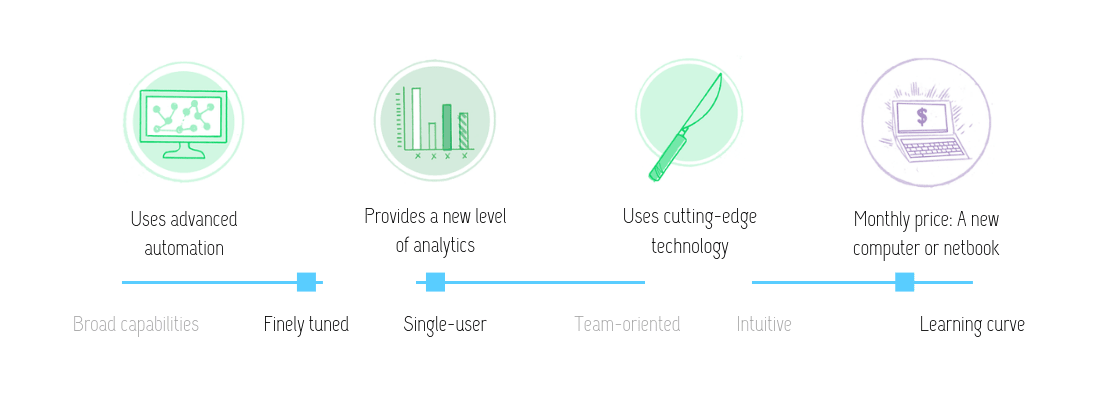This review originally appeared in the September 12, 2019 issue with the email subject line "What is innovation worth?" and a consideration of the resignation of Joichi Ito from the MIT Media Lab.
For several recent projects, I’ve been revisiting the information-saturated, slightly redundant world of SEO software. There are virtual barrels of tools that can help with SEO, and they boast features that fall into the below four buckets:
- Technical SEO, which analyzes factors like site speed, page structure, asset optimization, crawl budgets, etc.
- Backlink analysis tools, which identify which websites link to yours and can aid in finding new opportunities to build relevant links between domains.
- Keyword research and content optimization tools, which help find the terms that audiences use to describe products and services and the terms that Google identifies as important to a specific entity. I reviewed a keyword/content optimization tool called Clearscope a few weeks ago.
- Rank trackers, which… do just that. They track positions on search engine results pages.
On-page conversion rate optimization (CRO) software tools have been fairly common for the past five years. These tools render two versions of a website/page — usually with major design changes— to determine which is most successful at producing a specific outcome. Nine times out of ten the “specific outcome” is a completed form or a call, some kind of basic marketing CTA.
So imagine my delight at finding software that A/B tests SEO outcomes!
![Garth from Wayne's World says, "No Way" [gif]](https://cdn.substack.com/image/fetch/w_1100,c_limit,f_auto,q_auto:good/https%3A%2F%2Fbucketeer-e05bbc84-baa3-437e-9518-adb32be77984.s3.amazonaws.com%2Fpublic%2Fimages%2F9f846373-0d80-409c-92ac-cc26e12a1f65_250x188.gif)
At a glance: RankScience

RankScience is an A/B testing tool for SEO snippets and structure. Designed for large websites, particularly those with many iterations of the same type of page, RankScience splits similar pages into logical groups to test which ranking factors are most effective. Some of the SEO ranking factors RankScience can test include:
- Title tag / meta description formats
- Content positioning (i.e., whether the H1 should be placed above or below the hero image)
- Structured data and schema markup format
- Alt text format
- More behind-the-scenes SEO goodness like seasonality and algorithm changes.
Back when I was a full-time SEO, we would try to run experiments on title tag formatting but they were riddled with human error and really weren’t very scientific at all. We were never able to come to any definitive conclusion as to whether a title tag formatted “Cool Cats (Photos) | Wow | Brand name” ranked higher or drove more clickthroughs than “Cat Photos | Cool | Wow | Brand name.” Rank Science solves that problem.
It may seem negligible, but small tweaks can make a big difference in your visibility in organic search results, which can make a big difference in engagement. (Please also note: make sure that once people click through they’re engaged and finding what they need and all that.)
RankScience is my favorite kind of automation: it solves problems at scale that humans are literally not able to solve at any scalable level that provides meaningful ROI. That said, it’s really for hardcore SEO users who have already optimized their / websites to the umpteenth degree. RankScience is not built for small businesses; it’s for websites with thousands of pages, those content-driven or ecommerce websites that have enough content to make formatting tweaks at a scalable level.
And as an SEO nerd, I have to say: it’s really cool.
![Amy Poehler, dressed as a dirtbag, flashes hand symbols at the camera [gif]](https://cdn.substack.com/image/fetch/w_1100,c_limit,f_auto,q_auto:good/https%3A%2F%2Fbucketeer-e05bbc84-baa3-437e-9518-adb32be77984.s3.amazonaws.com%2Fpublic%2Fimages%2F5b2e0527-6d4d-411c-a9d5-b918d9f50402_400x219.gif)

